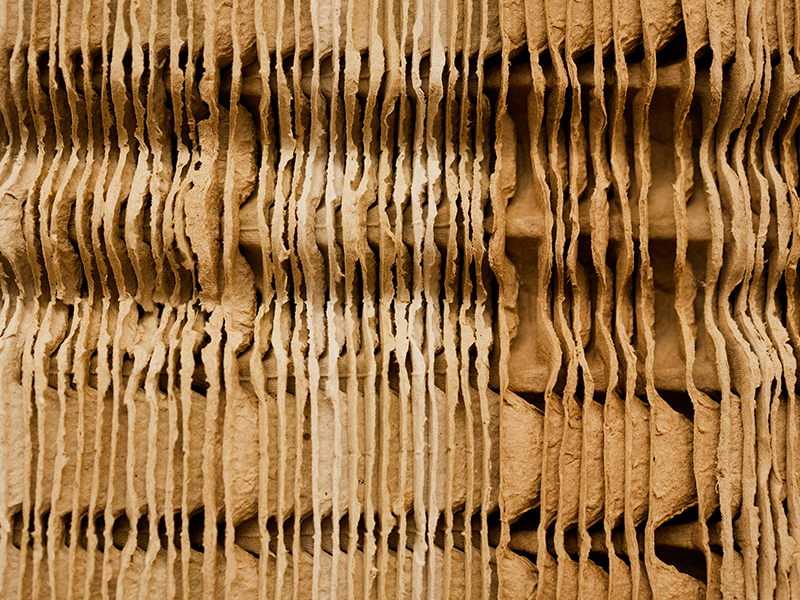Recyclability requirements, and single-use plastic bans, are fueling innovation and new applications for molded fiber packaging. Exclusive new data from Smithers – available to purchase now in the market report
The Future of Moulded Pulp Packaging to 2028 – show that in 2023, global production will just exceed 11,800 tons, with a value of $4.29 billion.
Molded pulp offers distinct advantages for brand owners searching for more sustainable, recyclable, and compostable alternatives to plastics. As a molding technology it can give more complex forms than other paperboard materials. This is driving significant investment in R&D and new production facilities worldwide. Charting these advances, Smithers expert forecasting is that the market will grow at a +5.7% compound annual growth rate (CAGR) to reach $5.64 billion in 2028, at constant prices. Across the same period, global production will increase at a slightly slower CAGR of +5.2% to 15,100 tons.
In 2023, the market is still dominated by three traditional packaging formats, egg cartons/boxes, shipping trays for eggs and fresh produce, and secondary protective elements for shipping consumer or industrial goods. Combined these still account for 65.0% of contemporary consumption, by weight.
The main impetus over the next five years is to commercialize new molded pulp consumer-facing formats, with paper and pulp companies poised to realize new revenue from sustainability-minded brands, retailers, and consumers. There are multiple technical challenges to making these a viable alternative to plastics:
- Superior functional coatings are needed to resist water, oil, and grease in food contact applications – especially for takeout and other foodservice businesses. Ideally these will be bio-based and not compromise the recyclability of the pulp at end-of-life
- The speed of pulp molding lines needs to be increased, with cycle times currently ten times slower the fastest plastic molding production
- Greater precision in fiber molding is demanded, while formats like molded fiber screw caps have been shown, these need refinement before mass-production can begin
- Dry pulp molding technology promises further environmental savings by eliminating water from the molding process, but this still requires commercialization support
- The surface and appearance of molded pulp packs require enhancement, to make them acceptable in higher-end segments, such as cosmetics, premium wines, or spirits.
Across the next five years, these innovations will benefit multiple segments. Smithers data show the fastest rate of increase (+8.5% CAGR, by volume) will be in fresh produce trays, punnets, and other formats for retail sale. Transition here presents few technical challenges with ambient goods, and is set to receive direct impetus from a new plastics ban for this segment proposed in the EU’s reformed Packaging and Packaging Waste Regulation (PPWR).
The market has already been stimulated in Europe, then more globally, by measures restricting the use of plastics in foodservice applications. Smithers forecasts strong growth for these (+6.9 CAGR) globally; and the parallel market for takeaway sales (+6.0% CAGR). Many major quick-service restaurant chains are actively supporting this transition. This will drive increased sales of molded pulp clamshells, trays, and cups; with a focus on twinning the latest molding and decoration techniques with a new generation of performance coatings.
Protective formats will also see attractive growth, especially in consumer-facing applications; with demand for consumer electronics increasing at a +6.8% CAGR over the Smithers forecast period.
The Future of Moulded Pulp Packaging to 2028 from Smithers provides forensic detail on this dynamic and fast evolving segment of the sustainable packaging market. Critical analysis of technical, brand owner, and regulatory demands is combined with exclusive quantitative forecasting.
Smithers dataset dissects the market by:
- Packaging format: Egg boxes/cartons; Egg trays (transit); Consumer fresh produce formats; Fresh produce trays (transit); Drinks; Other retail food & drink; Takeaway; Foodservice; Disposables; Cosmetics & personal care; Medical; Consumer electronics; Electrical applications; Other consumer protective; Automotive parts; Other industrial protective
- Geographic region/National market: North America, Canada, Mexico, US; South & Central America, Brazil, Other South & Central America; Western Europe, France, Germany, Italy, Spain, UK, Other Western Europe; Eastern Europe, Poland, Russia, Other Eastern Europe; Middle East, Turkey, Other Middle East; Africa; Asia, China, India, Japan, Other Asia; Australasia.
